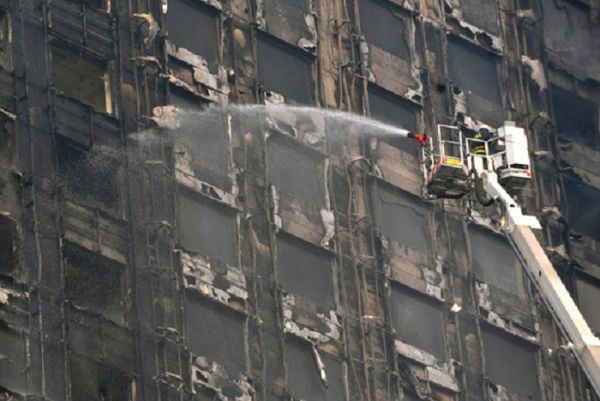The 25 November 2014 fire at the 23 storey ‘Lacrosse Docklands’ high-rise building in Melbourne’s Docklands precinct prompted the release of the Melbourne Metropolitan Fire Brigade’s (MMFB) report (no. 1403134A), which concluded that imported aluminium ‘Alucobest’ cladding “…did not to the degree necessary avoid the spread of fire as required by the Building Code of Australia“. The emerging problem is the extent to which Alucobest cladding has been used in the construction and property industries nation-wide.
Further, the Alucobest cladding crisis highlights a broader risk to the construction and property industries of using non-compliant building materials/products. The potential legal, insurance, warranty and business risks to these industries are high and are likely to arise quickly, making this a business risk that warrants urgent attention.
We discuss these risks below and provide some practical strategies that you might take to identify, mitigate or avoid them arising in your business.
1. Owners/Owners Corporations
Owners and Owners Corporations of commercial and residential buildings are advised to check whether the building materials/products used on their properties are compliant with all Australian laws and regulations. Experts with particular experience with the Building Code of Australia should be engaged to review the building materials/products used if there is any uncertainty about their compliance. Owners and Owners Corporations which fail to take action to replace non-compliant building materials/products may risk future liability for any loss or damage caused and exposure to civil penalties.
Consideration should be given as to who is responsible for the use of the non-compliant materials/products – who specified, installed and certified their use? What were their contractual obligations? Owners and Owners Corporations may be able to engage with any responsible party to carry out works to replace the non-compliant materials/products or seek to recover the costs of their replacement from the responsible party.
Statutory warranties are also available to Owners and Owners Corporations in respect of domestic construction in each State (see for example s 8 Domestic Building Contracts Act 1995 (Vic), s 18BHome Building Act 1989 (NSW) and s 41 Domestic Building Contracts Act 2000 (Qld)), which provide Owners with additional consumer protection mechanisms.
Identification of any insurance coverage which may be triggered and available to commercial and residential building Owners and Owners Corporations is important. For residential property owners, Builders Warranty Insurance or Home Owners Warranty Insurance policies may exist and may be of assistance subject to the terms of those policies.
It is extremely important for Owners and Owners Corporations to take proactive steps to mitigate any potential risks arising out the use of non-compliant materials/products in their properties and to develop response strategies to potential litigation. If no action is taken, Owners and Owners Corporations may bear the liability arising out of any potential action taken by other stakeholders.
2. Design Consultants and Builders
All design consultants and builders need to comply with both their contractual obligations and the legislative requirements of their respective states in relation to the quality of design and workmanship. Generally, this includes ensuring the building work (including materials or products) complies with all legislative requirements, including the Building Code of Australia.
If non-compliant materials/products have been specified for use in a building by a design consultant and the builder has used them, both need to be aware of exposure to potential liability for their specification and use, including contractual and tortious obligations. A strategy should be put in place to assess that position and to appropriately mitigate the business risk.
Design consultants and builders should therefore carefully review all materials/products to be used in a building project to ensure that they do not specify, recommend or use non-compliant materials/products. If it comes to your attention that non-compliant materials/products have been used in a building project then proactive and urgent steps should be taken to contact affected building owners and, where appropriate, to replace the materials/products. Continued breach of the Building Code of Australia by using non-compliant materials/products may result in formal warnings, exclusion from tendering opportunities for a fixed period of time and deregistration.
Design consultants and builders should ensure that their employees and subcontractors do not specify, recommend or use non-compliant materials/products in their work.
Identification of any relevant insurance coverage or insurer notification requirements is also important and the development of response strategies to potential litigation is suggested.
3. Suppliers / Importers
Depending on the nature of the products supplied, and the use to which they are put, the importer of the materials/products may find itself deemed, by operation of the Australian Consumer Law, to be the manufacturer of the imported product. With this come a range of claims that may be made against the supplier/importer as if that entity was the original manufacturer of the product.
Care should therefore be taken to conduct proper due diligence on all materials/products supplied or imported and used in construction projects, to ensure they are safe, that they comply with all Australian laws, and that their supporting documentation is accurate. Importers should also consider their rights of recourse against overseas suppliers and demand the provision of security to ensure that realisable assets are available against which to enforce claims.
Concerns surrounding the use of Alucobest cladding act as a timely reminder for the Australian construction and property industries to review the following checklist to identify the potential risks of, and exposure to, the use of non-compliant materials/products and, to assist with an appropriate response:
- Were any non-compliant materials/products used on the relevant building? If this is unclear make enquiries with the design consultants and builders or engage a suitably qualified expert to assist in the review.
- Were any overseas manufactured materials/products used on your project/home? If yes, identify the relevant supporting documentation. Does it confirm compliance with Australian laws? Is any additional due diligence or testing on the materials/products required to ensure compliance with Australian laws? Importantly, have all parties discharged their contractual, tortious and statutory obligations?
- Where any concern arises as to the use of non-compliant materials/products – identify and implement an urgent rectification plan.
- Consider whether any other stakeholders need to be notified (builders, designers, suppliers, financiers, insurers, regulators) and consider the extent of your engagement with them through the rectification process – develop a plan and make sure that it is widely known, understood and followed.
- Identify and implement any changes to your due diligence process to ensure that non-compliant materials/products are not used in future projects.


